How to get mould and mildew out of outdoor cushions quickly and effectively
Banish bacteria and freshen up your outdoor fabrics with our easy how to
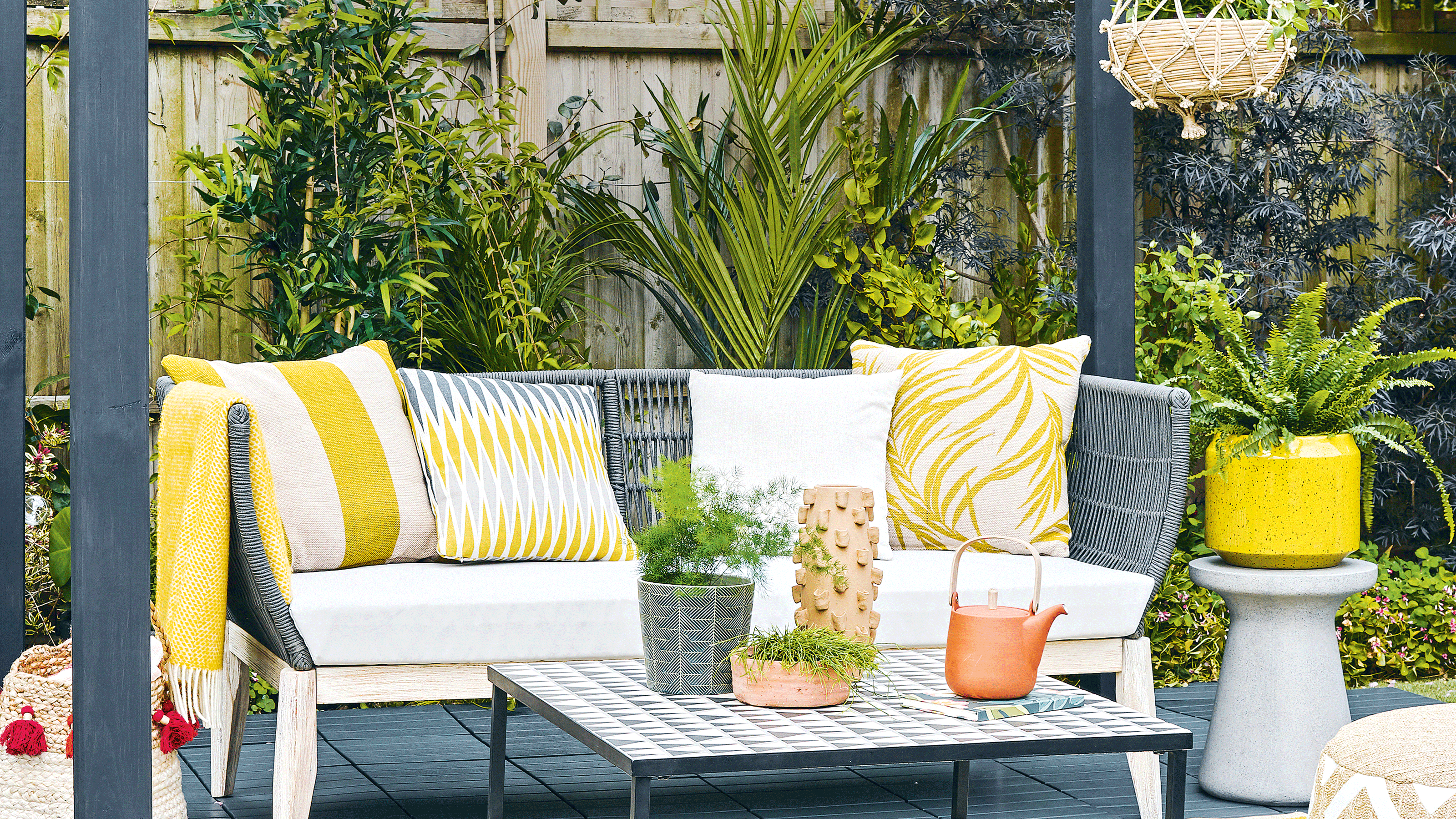

If your garden furniture set is adorned with outdoor cushions, you might be feeling dismayed if you've noticed the unmistakable signs of mould settling into the fabric over the winter months. But fortunately, you can learn how to get mould and mildew out of outdoor fabric, and it's pretty simple too.
Garden furniture is a staple in the spring and summer months, which is why it's important that we keep it clean and fresh. When we're kicking back to relax on our garden sofa sets or chairs, nothing will kill the vibe more than signs of mould and mildew on the fabric.
Like learning how to get rid of mould from walls, it's essential that you act fast and rid your cushions of the bacteria. Luckily, we've put together this easy-to-follow guide which shows you how to get mould and mildew out of outdoor cushions, quickly and effectively.
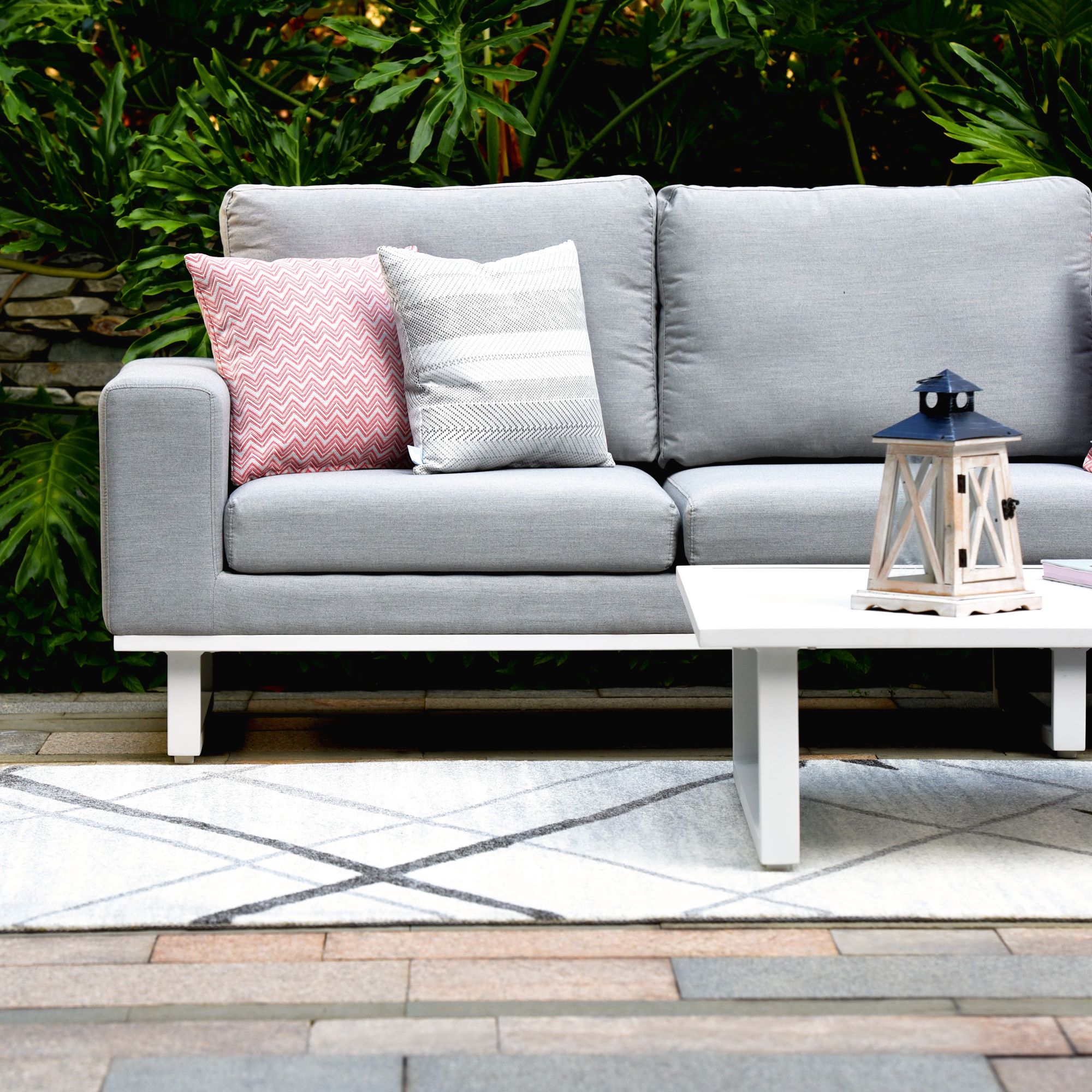
How to get mould and mildew out of outdoor fabric
Even the best outdoor cushions can fall victim to mould and mildew, which is why it's a good idea to keep on top of cleaning them regularly. We know how easy it is to neglect our garden furniture ideas over the winter months though, which is why we've asked the experts how to get mould and mildew out of outdoor fabric, so they can be freshened up when cleaning garden furniture.
Ideally, follow the steps below on a sunny, non-humid day so your cushions can freshen up naturally.
What you'll need
- Stiff bristled brush
- White vinegar
- Baking soda
- Water
- Spray bottle
- Scented air freshener
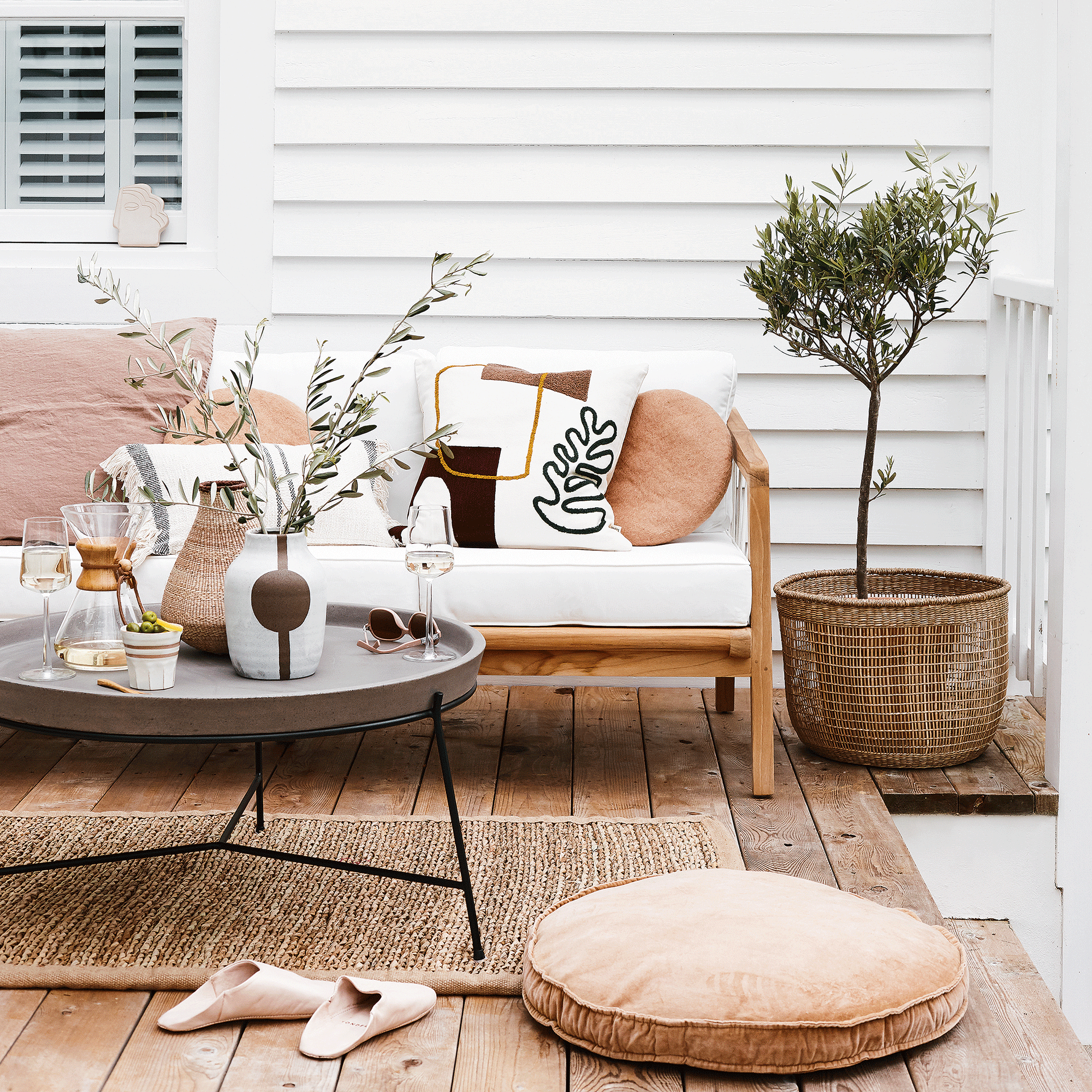
Step-by-step
1. Brush away loose dirt
The first step with learning how to get mould and mildew out of outdoor fabric is to brush away loose dirt so you can apply your cleaning solution better. It's a good idea to do this regularly anyway, to prevent mould and mildew forming in the first instance. Make sure you've got your protective gloves on from the get go, so you don't have to touch any nasty bacteria.
2. Create a vinegar solution
Cleaning with vinegar is one of the oldest tricks in the book for getting rid of mould and mildew, and it will work wonders on outdoor fabrics too. Plus it will freshen your cushions up if they've developed a musty odour over the winter months.
Grab an empty spray bottle as this will help you apply it more evenly across the fabric - you want to apply a light covering of vinegar onto the cushions rather than drown them. Mix the vinegar with equal parts water so that the solution is nice and diluted. Depending on the intensity of the mould and mildew, add a sprinkle of baking soda - this will work with the vinegar to decompose the bacteria.
3. Spray and brush
Spray the vinegar solution over the affected areas, making sure to give them a nice even covering. Then grab a clean bristled brush and gently brush the solution into the fabric. Work the solution into the stains, but don't rub the fabric too harshly so you don't risk wearing it away.
4. Leave to sit
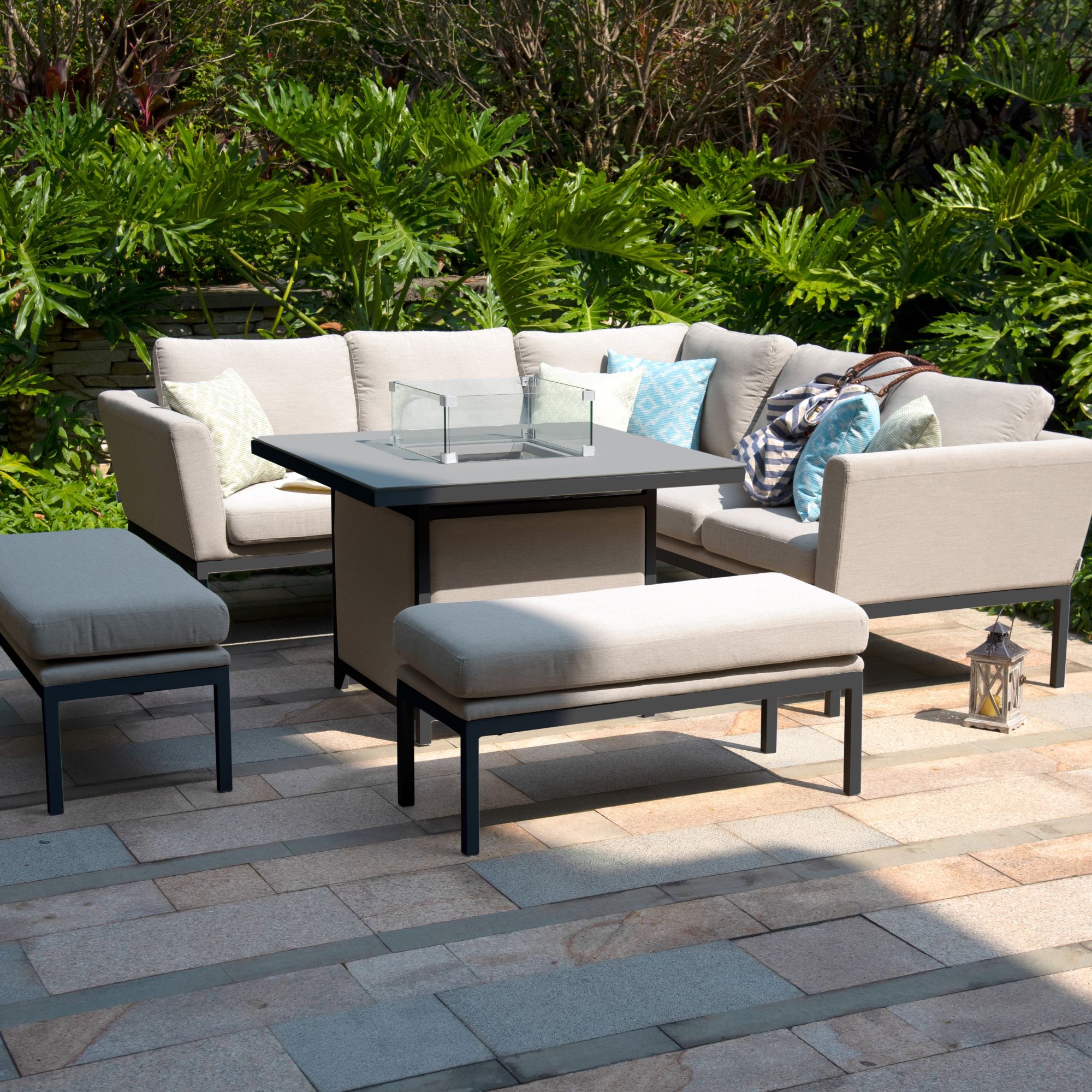
After you've applied the vinegar and brushed it into the affected areas, let the solution sit on the fabric for a while. Anywhere between 10 and 30 minutes is fine, depending on how much mould there is and how much vinegar you applied. Let the vinegar work its magic; its highly acidic contents will decompose the mould and mildew so that they naturally lift away as they dry.
5. Let the fabric air dry
When learning how to get mould and mildew out of outdoor fabric, don't be tempted to dry off the cushions with a towel. Letting the cushions air out in the sunshine will help the bacteria decompose naturally.
6. Freshen up
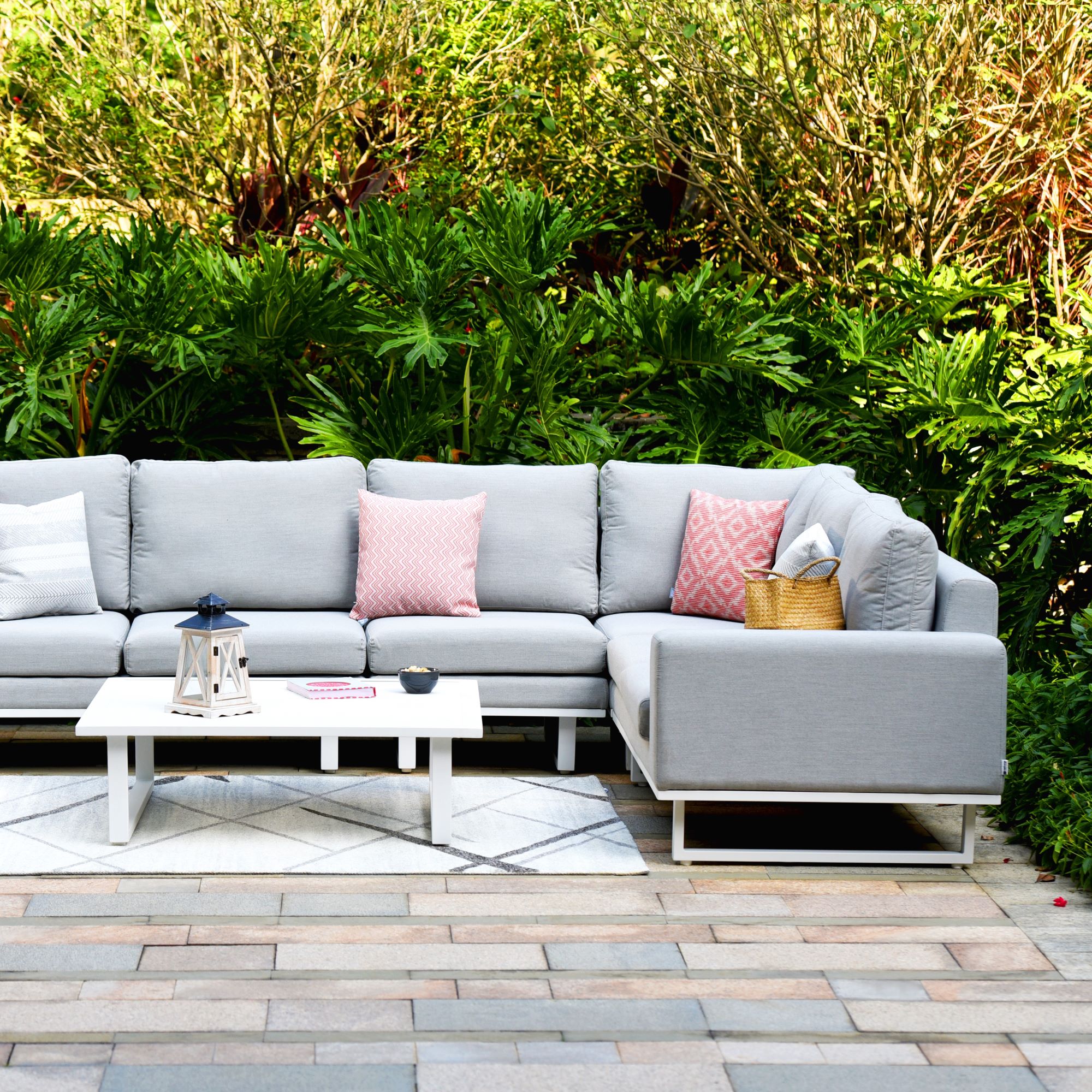
Finally, it's a good idea to spritz your cushions with some scented air freshener spray. White vinegar is great, but it can leave a lingering odour that isn't the most pleasant. A quick spritz with your favourite air freshener though, and no one will ever know.
Do make sure you've also looked into how to clean mould off wood, too, though. After all, a clean cushion on a mouldy garden chair isn't going to stay pristine for long!
And that's it - the best way to get mould and mildew out of your outdoor cushions and any other fabrics, in five simple steps.
FAQ
How do I prevent mould and mildew from forming on outdoor fabric?
'To prevent mould and mildew from forming, it's important that you make sure that all of your outdoor cushions and soft furnishings are made with water-resistant materials, as these cushions are the least likely to see any mould and mildew form,' says Rian Habergham, Outdoor Furniture Expert, Leisure Bench.
When shopping for outdoor cushions, check the manufacturer label to see what material the fabric is. Polypropylene fabric is ideal because it's waterproof, so your cushions won't stay wet for long if you leave them outside in the rain. If your cushions aren't water-resistant - check with your supplier if you're not sure - you'll need to keep them in garden storage ideas when they're not being used, or take them in the house.
'If the cushions and soft furnishings you have outside are not water resistant or designed to be outside, you must remember to bring them inside when they're not being used', says Rian. 'Keeping them warm and dry will ensure that no mould and mildew can form, and will ensure that they're not damaged by adverse weather conditions.'
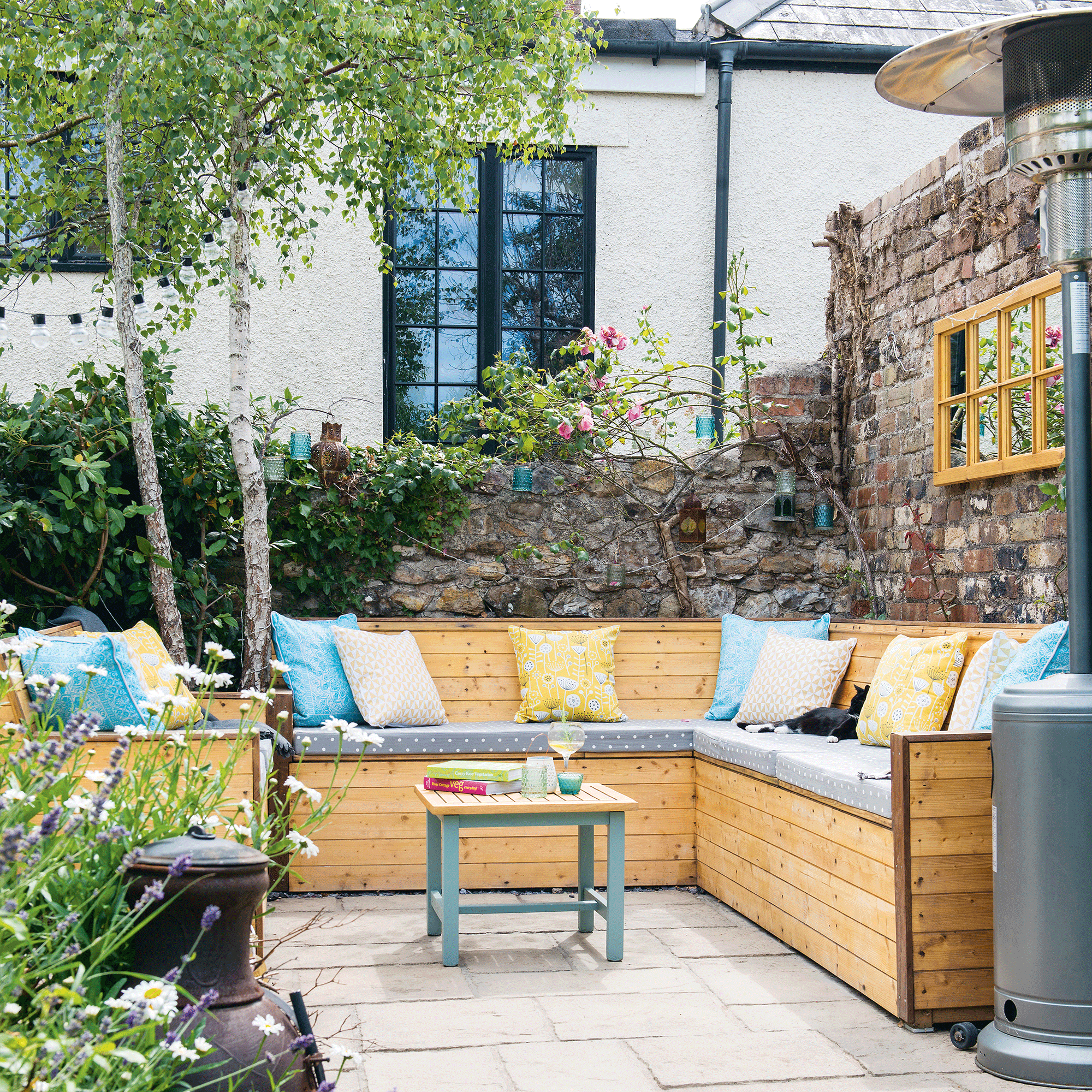
How often should I clean outdoor cushions?
'As a general rule of thumb, outdoor cushions should be cleaned at least once every month, especially during the warm and humid seasons,' say the experts at Pound a metre.
Once a month is a guideline for cushions being stored outside; if yours are kept inside a garden building or somewhere in the home when they're not being used, you won't have to clean them as often.
'For our Outdoor Fabric range, we recommend cleaning the products once a year,' says Andy Baxter, Managing Director, Maze. 'Ideally at the end of spring so the furniture is in the best condition ready for summer.'
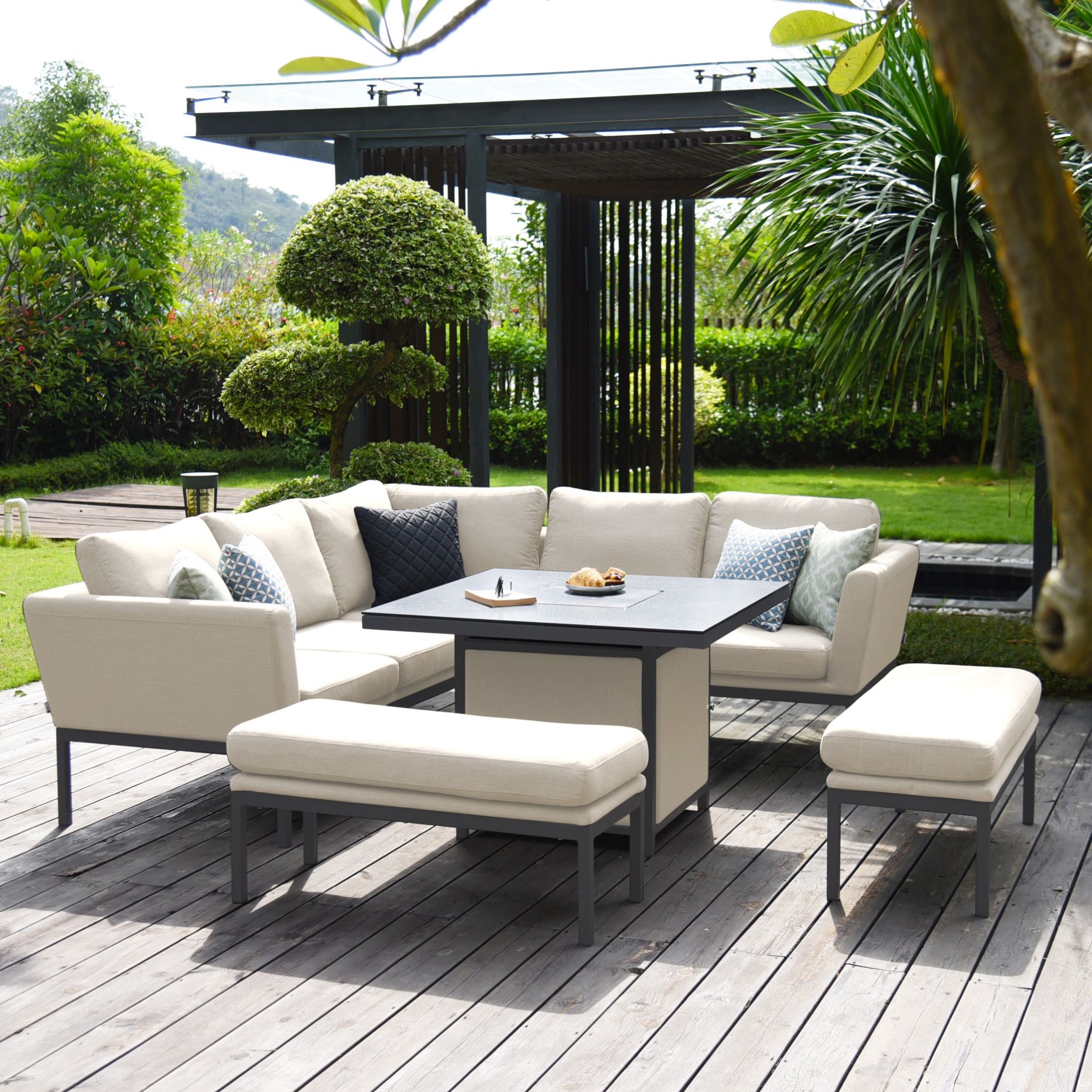
Can you get mould out of outdoor fabric?
The good news is yes, you can get mould out of outdoor fabric, but it's important to act fast and clean it as soon as you notice the mould. The longer it sits there, the harder it will be to lift.
Following the steps in our guide, you should be able to get mould out of outdoor fabric by spraying a diluted white vinegar and baking soda solution onto the affected areas, then leaving them to air dry in the sun. If the mould persists, try using a specialist product formulated to remove mildew.
'If you discover your cushions looking a little worse for wear - perhaps they were left out of sight for a couple of nights - you might want to consider a deeper clean,' says Jackie Shephard, Head of Homeware at Terrys. 'Check to see if your covers are machine washable, because that might be the quickest and easiest way to get them spick and span. If not, dry cleaning is a tried-and-tested way to maintain any outdoor fabric, as it will eliminate any mould or mildew that has formed.'
How to remove mildew stains from outdoor cushions without bleach?
You may be tempted to use bleach to remove the mildew stains from your outdoor cushions, but the experts warn against this. 'You should never use a bleach mix to clean your outdoor soft furnishings as not only is bleach damaging to the majority of fabrics, but it can also damage the environment', says garden furniture expert Rian.
Bleach can change the colour and consistency of your outdoor fabric, so use a combination of white vinegar and baking soda instead. These are two powerfully active ingredients that will kill the spores causing the mould and mildew.
There are specialist cleaning kits you can purchase as well, such as the Maze Outdoor Fabric Cleaning and Protector Kit. 'To maintain your outdoor furniture in the colder months, as well helping to prolong its life, it’s worth investing in a kit like this', says Andy from Maze. 'These kits help prevent mould and mildew and create a protective shield over your outdoor fabrics.'
So now that you've learnt how to get mould and mildew out of outdoor fabric, you can go back to enjoying your lovely cushions as they were!
Get the Ideal Home Newsletter
Sign up to our newsletter for style and decor inspiration, house makeovers, project advice and more.

Katie has been writing freelance since early 2022, specialising in all things homes and gardens, following achieving a Masters in Media and Journalism. She started out writing e-commerce content for several of Future’s interior titles, including Real Homes, Gardeningetc, Livingetc, and Homes and Gardens. Since then she’s been a regular contributor on Ideal Home’s digital team, covering news topics, how-to guides, and product reviews.
-
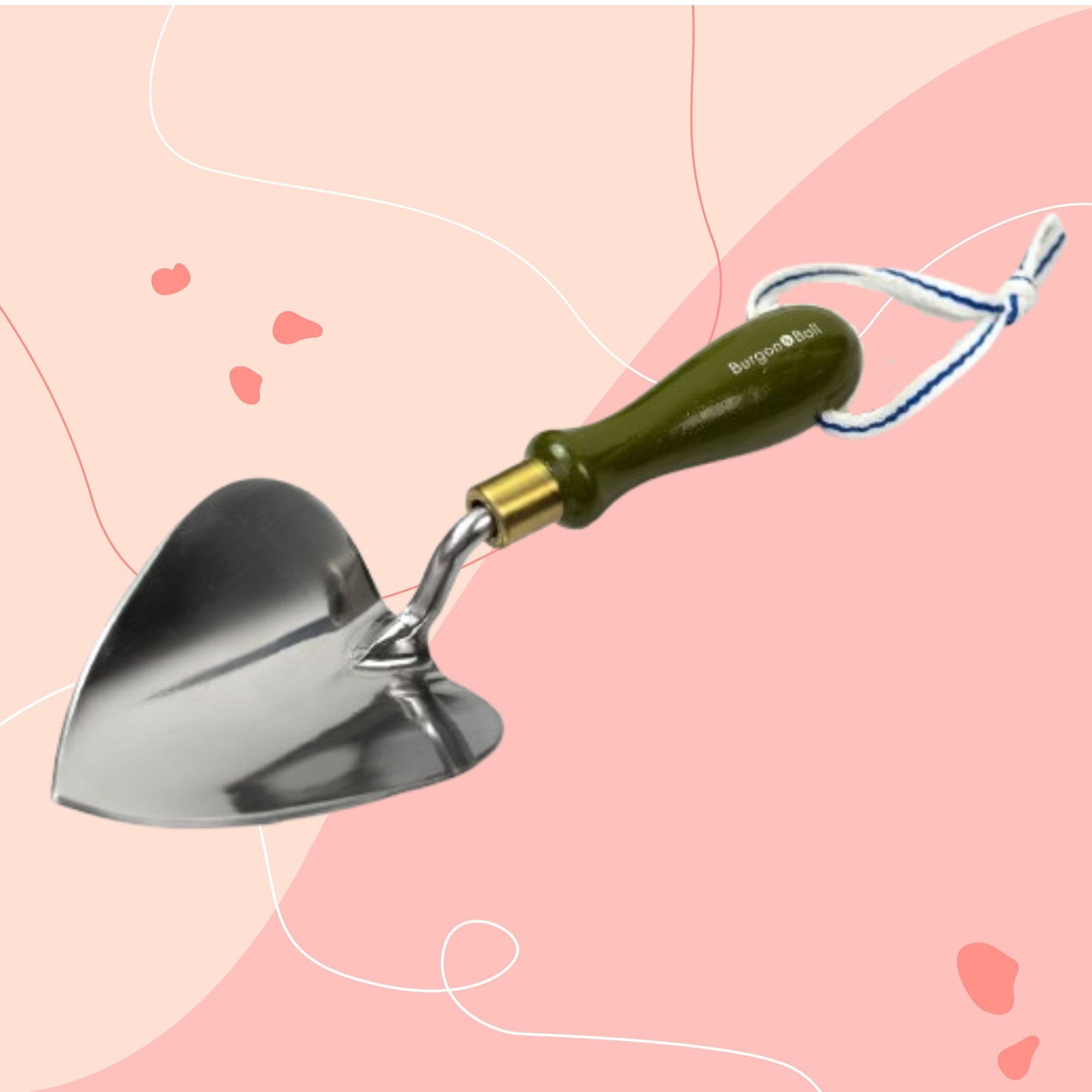 I was introduced to this clever heart-shaped trowel 2 months ago, and now I'll never garden without it – it's made planting seedlings so easy
I was introduced to this clever heart-shaped trowel 2 months ago, and now I'll never garden without it – it's made planting seedlings so easyIt's affordable and stylish
By Sophie King
-
 The pink Ninja air fryer of our dreams has arrived, but only in the US
The pink Ninja air fryer of our dreams has arrived, but only in the USNinja's spring colours collection i the US has sparked some serious appliance envy
By Molly Cleary
-
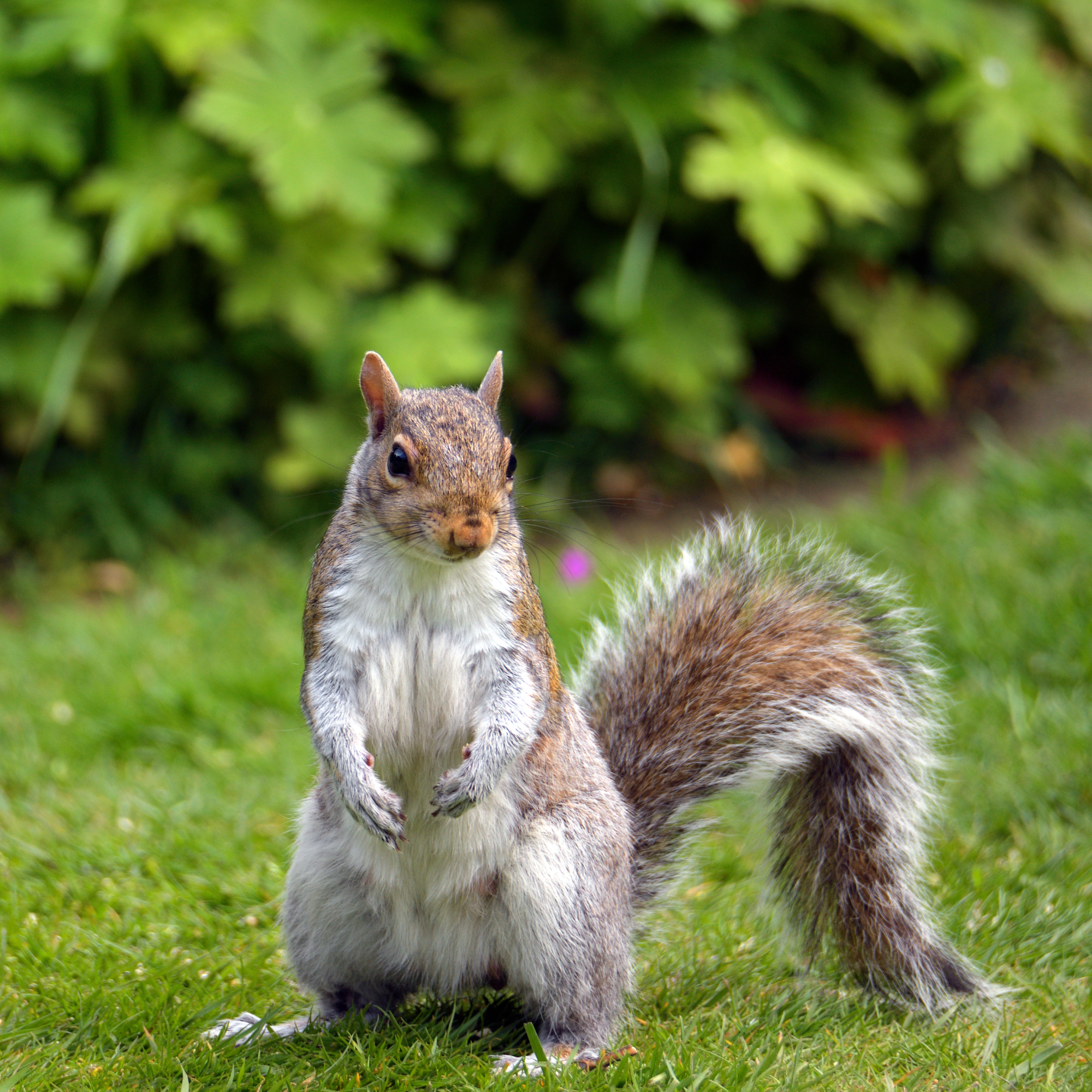 3 humane methods to stop squirrels eating your plants, according to garden experts
3 humane methods to stop squirrels eating your plants, according to garden expertsStop squirrels from munching on your plants with these three humane methods
By Kezia Reynolds